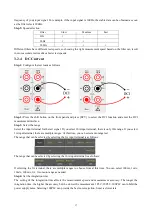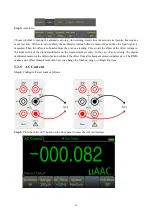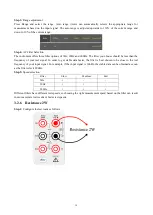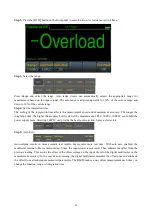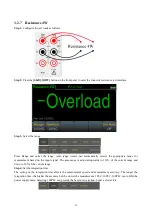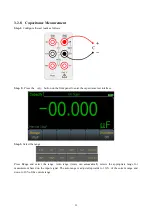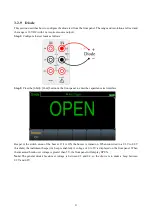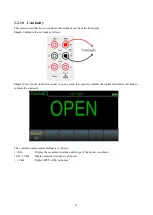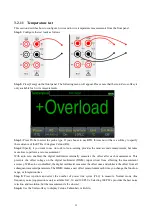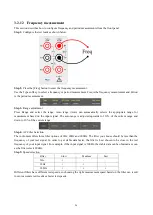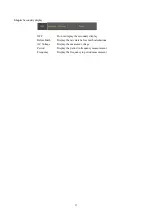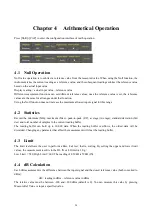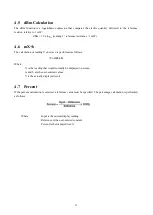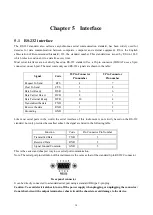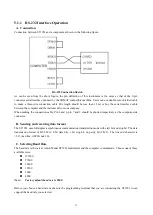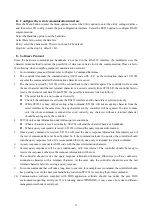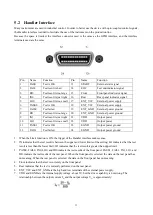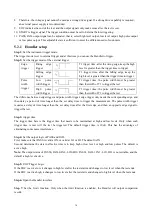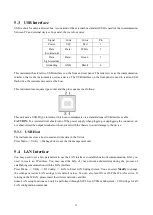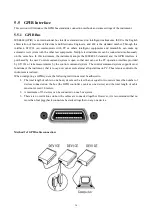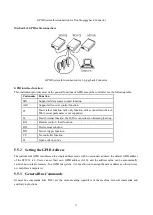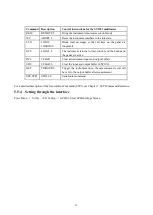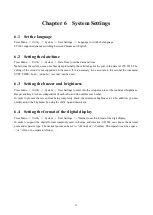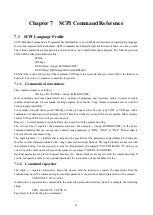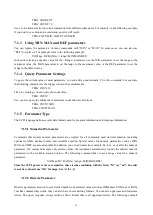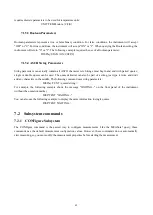
28
Chapter 4 Arithmetical Operation
Press [Shift]+[CAP] to enter the configuration interface of math operation.
4.1 Null Operation
Null value operation is to subtract a reference value from the measured value. When using the Null function, the
instrument takes the current reading as a reference value, and the subsequent readings subtract the reference value
based on the actual input value.
Display reading = actual input value – reference value
Different measurement functions can set different reference values; once the reference value is set, the reference
values are the same for all ranges under that function.
Using the Null function does not increase the maximum allowed input signal for this range.
4.2 Statistics
Record the minimum (Min), maximum (Max), peak-to-peak (P-P), average (Average), standard deviation (Std
dev) and total number of samples in the current reading buffer.
The reading buffer can hold up to 10,000 data. When the reading buffer overflows, the oldest data will be
discarded. Changing any parameter that affect the measurement will clear the reading buffer.
4.3 Limit
The limit test allows the user to perform a Pass, Fail test, that is, sorting. By setting the upper and lower limit
values, the measurement result is in the HI, IN or LO interval. E.g.:
Low Limit = 580; High Limit = 600. The reading of 0.59kΩ is 590Ω (IN).
4.4 dB Calculation
Each dB measurement is the difference between the input signal and the stored reference value (both converted to
dBm):
dB = reading in dBm – reference value in dBm
The relative value must be between -200 and +200 dBm (default is 0). You can measure this value by pressing
Measure Ref Value or input a specified value.




